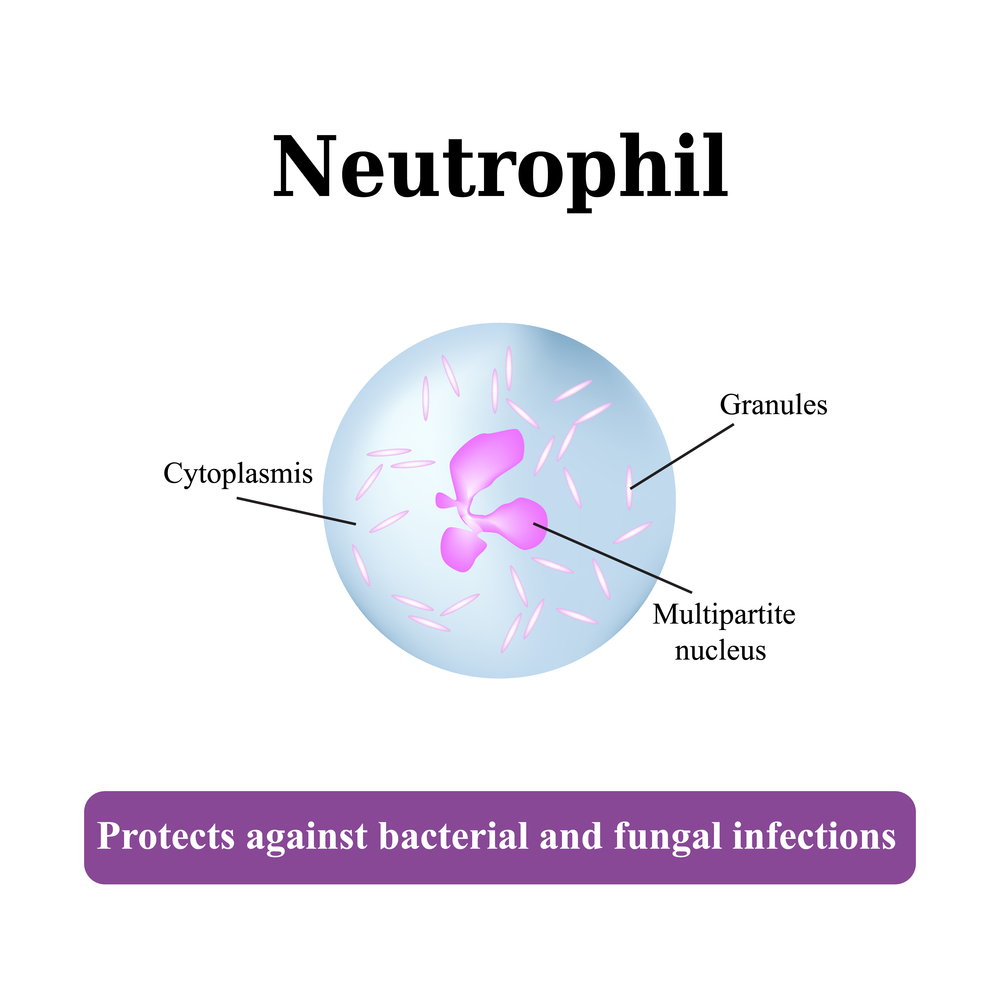Our Invaluable Friends – Neutrophils
Our invaluable friends – Neutrophils
Multicellular organisms evolved from unicellular organisms over thousands of years. They also continue their fight against pathogens even now. Their friend and associate in this fight are the neutrophils. These are phagocytes evolved as specialized cells that engulf and kill the invading microorganism like bacteria. By and large, they are not effective against viruses. These specialized cells are there only, in higher animals. Animals, like insects, depend on the innate immune cells.

What are neutrophils?
- Neutrophils are formed in the bone marrow, the soft spongy tissue in the middle cavities of long bones and in the dense hip bones. Bone marrow forms these cells from the stem cell present in the marrow in abundance.
- They, along with basophils and eosinophils, have the common characteristics of having lobed nuclei and grouped as polymorphonuclear cells.
- Neutrophils are so named for their staining characteristics, that is, they get stained as a neutral pink color.
- 50% to 60% of the bone marrow is reserved for forming neutrophils.
- 40% to 70% is the normal range of neutrophils in the circulating blood.
What is the condition called low neutrophils like?
- There are medical conditions that cause a lower than normal Neutrophils count. This condition is called neutropenia.
- There are quite a few medical conditions that can cause the low neutrophils condition.
- Some are congenital and others are infections.
What are the conditions that lead to neutropenia or low neutrophils?
- Congenital conditions that cause neutropenia are Kostmann’s syndrome and myelokathexis.
- Low neutrophils is also induced by medication or therapeutics are radiation therapy and chemotherapy.
- Infections like tuberculosis, typhoid, hepatitis A, B, C, HIV and AIDs, viral infections, malaria, and vitamin B12 deficiency all cause this condition.
- Sepsis is a condition that overwhelms the system by using up more neutrophils than the body can produce, leading to low neutrophils.
- Other conditions like leukemia, hypersplenism, antibiotics, and certain other medication and autoimmune disorders cause destruction of neutrophils in the blood, leading to neutropenia or low neutrophils.
What are the helpful functions of Neutrophils?
- The main function of Neutrophils is to fight bacterial infections.
- They do so by migrating through the walls of the blood vessels and then through the interstitial tissue, after which they reach the site of infection.
- The average size of these cells when they are adhered to the walls of the blood vessel is of the order of 8 to 15 microns, and only 8 microns when suspended in blood.
- They are very motile and are deployed to the sites of infection or inflammation in a matter of minutes.
- The process of migration consists of two steps. The preliminary one is the development of pseudopodia, like one associates with amoeba.
- The pseudopodia are rich in receptors that are very sensitive to chemicals produced by the cells at the site of the infection or inflammation. The entire process is called chemotaxis.
- Recent research has found another mechanism called Neutrophils swarming. This is a highly coordinated process, where the neutrophils communicate with other cells of the immune system.
How do they conquer the invaders and eliminate them?
- Here, again the pseudopodia, meaning false foot, are instrumental.
- These pseudopodia surround the bacteria and kill them with very powerful chemicals and a process called degranulation.
- The neutrophils deploy a closely woven net of chromatin and another powerful antibacterial chemical called NET, Neutrophil External Trap.
- These NETs trap bacteria and kill them. This is independent of the pseudopodial bactiorophaging.
- These NETs provide a very high concentration of bactericides.
Do neutrophils have any role in autoimmune diseases?
- The role of neutrophils in tissue destruction is well documented.
- Modern research indicates that neutrophils play an active role in promoting inflammation in autoimmune disease conditions.
- In recent studies of atherosclerosis, it has been found that neutrophils actively take part in lesion development and weaken the fibrous cap of the lesion.
- Greater complex roles, not suspected earlier, are revealed by modern research. It is now appreciated that a major source of autoantigens is neutrophils.

